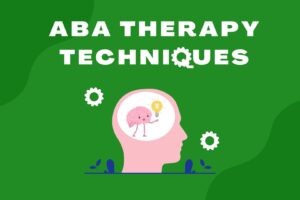
Whether your child has been receiving autism treatment for years or meeting with their therapist for the first time, they will take part in a range of ABA therapy techniques that will help them make remarkable personal growth.
Discrete Trial Training
One of the most common ABA therapy techniques is Discrete Trial Training (DTT), which gets right to the heart of what ABA is. Discrete Trial Training means breaking down an action into small, bite-sized pieces and using positive reinforcement as a means of incentivizing the desired behaviors.
“For children with autism, DTT is especially useful for teaching new forms of behavior (e.g., speech sounds or motor movements that the child previously could not make) and new discriminations (e.g., responding correctly to different requests).”
Some of the benefits of DTT versus other ABA therapy techniques are:
-
There is a clear and predictable structure for learning that makes expectations obvious and therapy sessions productive.
-
It helps children with autism focus and understand how to perform complex tasks in an approachable way.
-
It can be applied to nearly any task that requires a set of actions needed to accomplish something.
Natural Environment Teaching
This ABA therapy technique occurs in a natural setting, such as a classroom or a store, when a child needs a more complex, less structured approach. Natural Environment Teaching (NET) is a scientifically proven teaching method that lets ABA practitioners use their surroundings to help children with autism understand, develop, and hone learned skills.
Natural Environment Teaching can help children with autism in several ways:
-
Children with autism can learn and practice skills in a real-world environment where things aren’t structured/planned.
-
They’ll get more out of skill- building since they can choose what they want to focus on when NET is initiated.
-
They can have fun learning since these kinds of therapy sessions are often spontaneous.
You can get an in-depth look at Natural Environment Teaching and why it’s one of the most important ABA therapy techniques here.
Modeling
Modeling is an ABA therapy technique where children with ASD imitate a target behavior from someone who has already mastered the targeted action. Modeling is implemented in ABA therapy either in-person or online through video calling.
Both video and face-to-face approaches can be effective depending on the needs of the child and the area of focus. Modeling is often used in conjunction with DTT and NET to help children with autism gain important life skills, gain confidence, and lead more independent lives.
Modeling provides a simple way for children with autism to follow along and learn new skills, such as social and play skills, self-help skills, communication skills, and more. It can also help build trust between the client and their behavioral therapist.
Prompting/Fading
Prompting and fading is one of the most used ABA therapy techniques. ABA therapists will provide assistance or give a cue when a child is learning a new skill and then gradually reduce the child’s dependence on a particular prompt to perform the skill. In other words, the prompt-and-fade approach can help certain behaviors become natural.
The types of prompts that are used will differ depending on the situation. There are physical prompts when an ABA therapist will perform an action to help a child trying to learn a skill. An example is when a child is brushing their teeth, and an ABA therapist squeezes a bit of toothpaste onto the brush.
Verbal prompts are another method that ABA therapists can use to help children with autism master skills. Verbal prompts are commonly used during language learning. An example could be a child learning how to say the word “firetruck.”
At the beginning of the learning process, the therapist would say the entire word so the learner can understand what it sounds like. Over time, the ABA therapist will lessen how much of the word they say until the child can say the word on their own.
Building Rapport
Building rapport (also known as pairing) is an ABA therapy technique where an ABA therapist is actively engaging in an activity that a child is focused on. From a simple smile to following the client’s lead during play, there are many ways that an ABA therapist can start to build a comfortable and safe environment for current and future ABA therapy sessions.
The way ABA therapist interacts with their client can make a big difference in how the child engages with therapy.
A study conducted by Kelly et al. identified seven skills that you should engage in when pairing with a new client. These include proximity to the client, praise, reflection, imitation, describing the initiative, and creating new activities. A combination of these skills, when performed proficiently, has shown to be effective in building rapport and reducing problem behavior.
Learn more about why building rapport is one of the best ABA therapy techniques that clinicians can use here.
Providing Positive Reinforcement
ABA therapists will often use positive reinforcement to reward a child when they successfully complete a targeted action. This is done with the hope that the reward will encourage the child to repeat the desired behavior. Over time, the reinforcers are given out less often until the desired behavior becomes a part of the child’s routine.
For example, we can look at a child with autism who is learning how to cut a piece of paper with scissors. When the child can successfully complete one of the steps needed to accomplish the task, an ABA therapist may reward the child with praise or one of many other kinds of reinforcers.
ABA Therapy Techniques Will Vary
The ABA therapy techniques that are mentioned in this blog are just a small fraction of the ways that ABA therapists transform the lives of children with autism. From making token boards to focusing on play-based care, the most important thing to remember is that each child is on their own unique journey toward personal growth and development.
Sources Cited
-
Association for Science in Autism Treatment. Modeling.
-
Kelly A., et al. Effects of Presession Pairing on the Challenging Behavior and Academic Responding of Children with Autism.
-
Smith, T. Discrete Trial Training in the Treatment of Autism.





